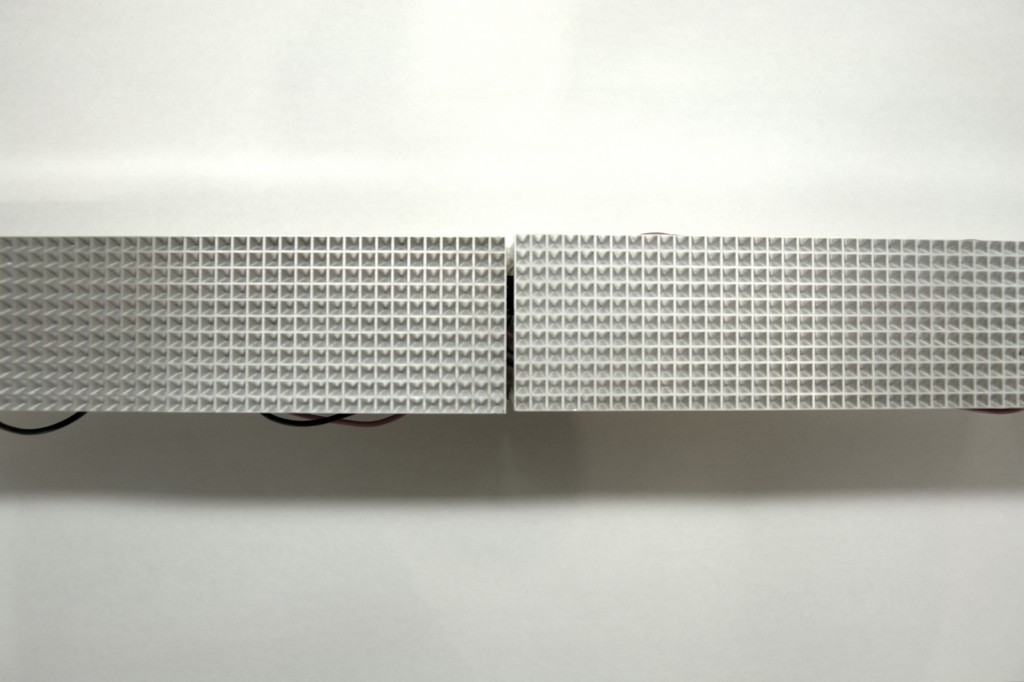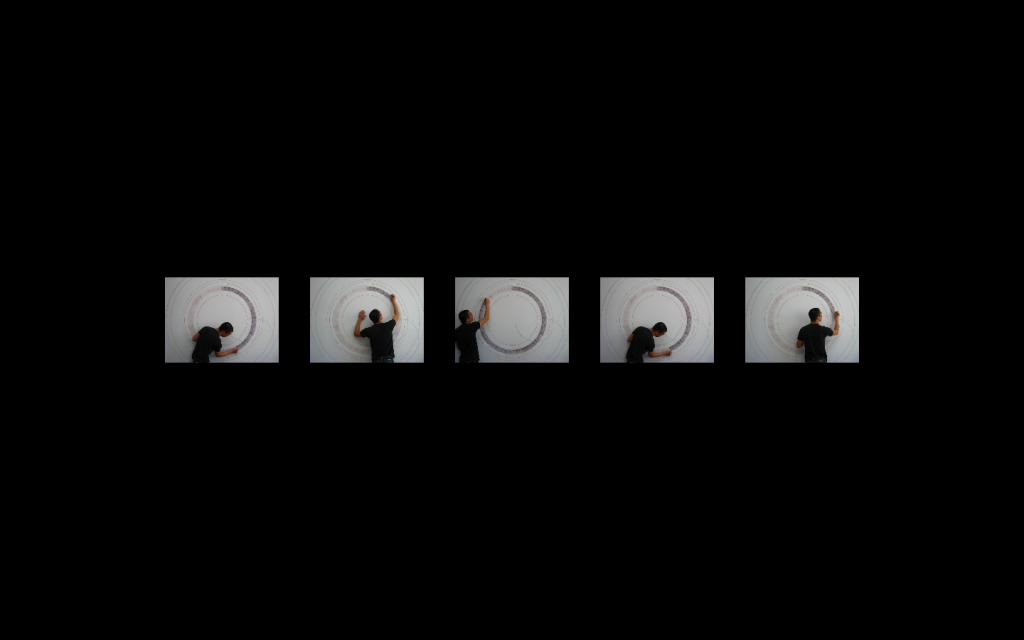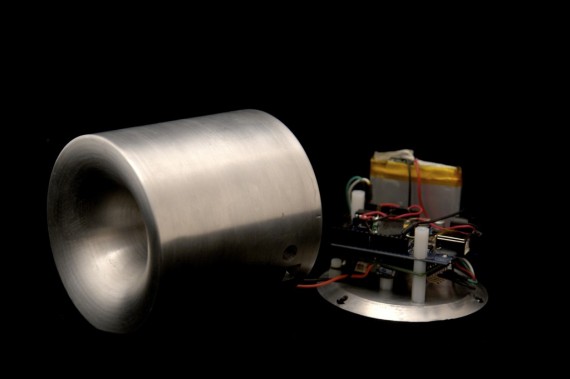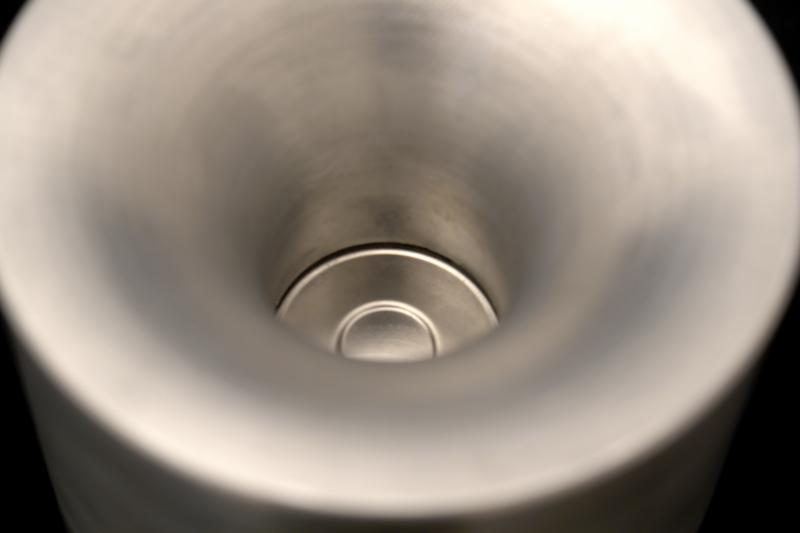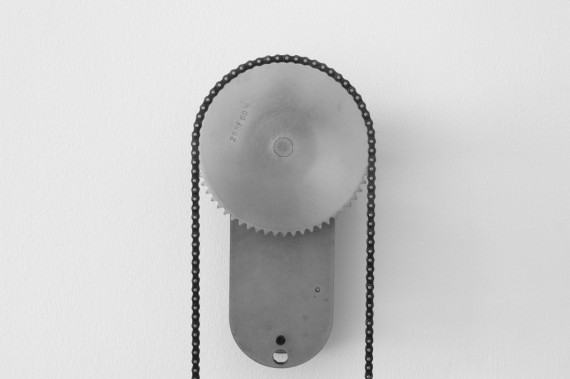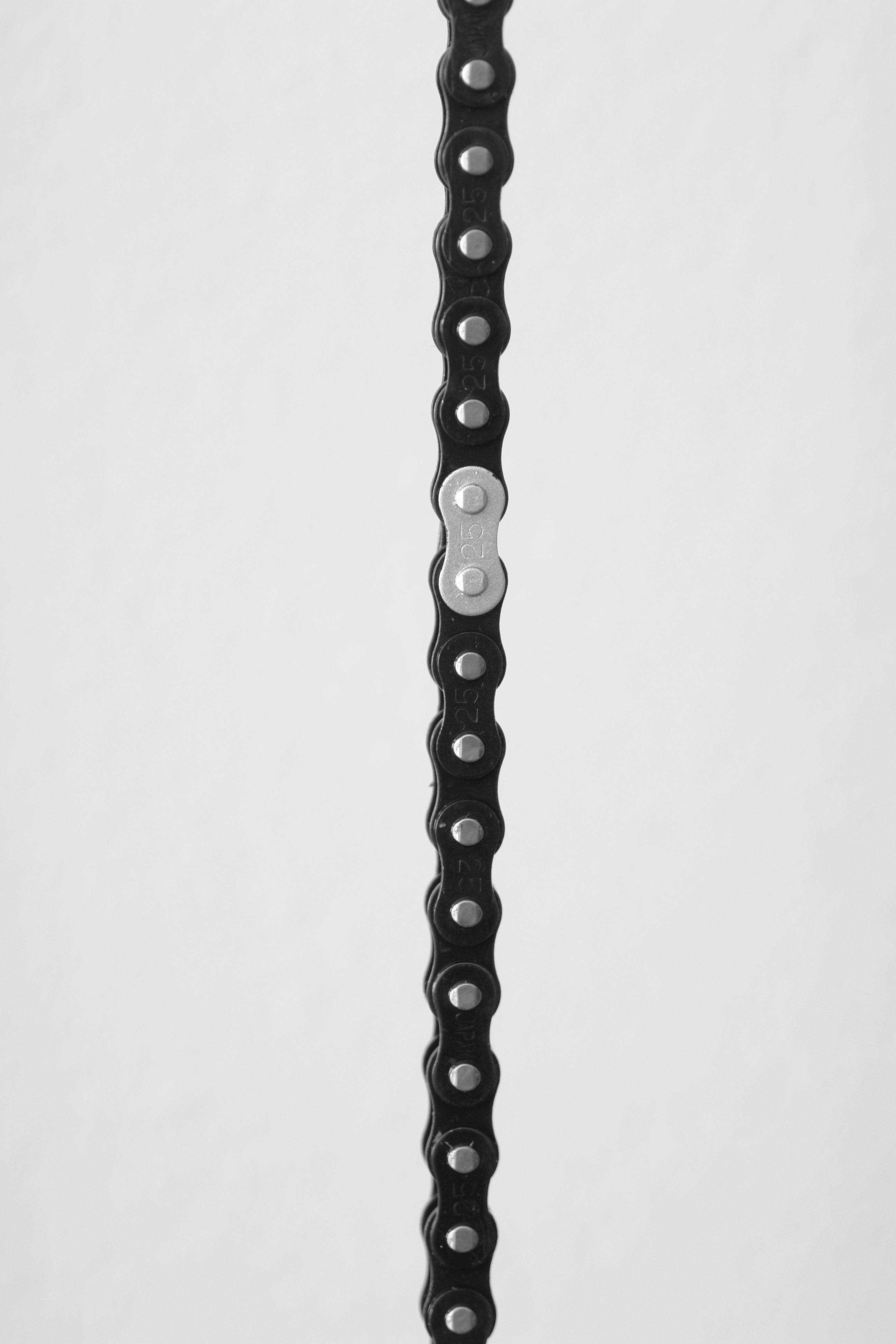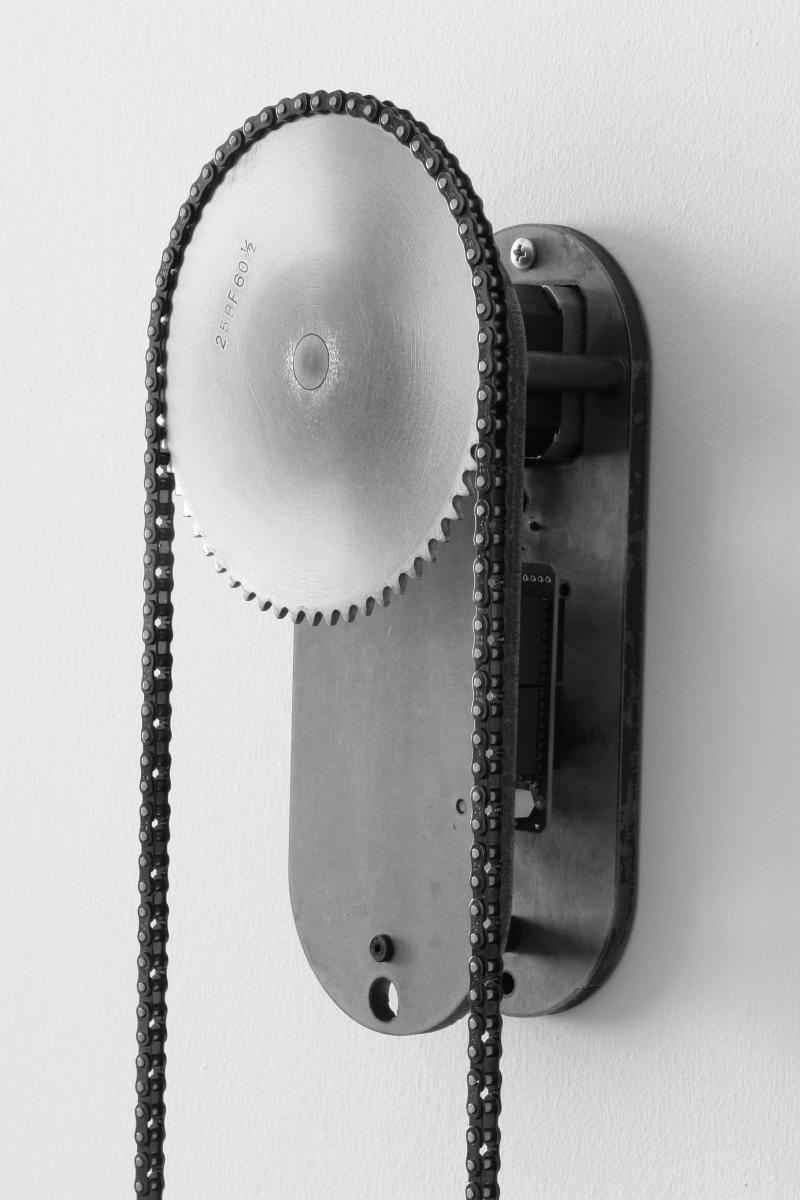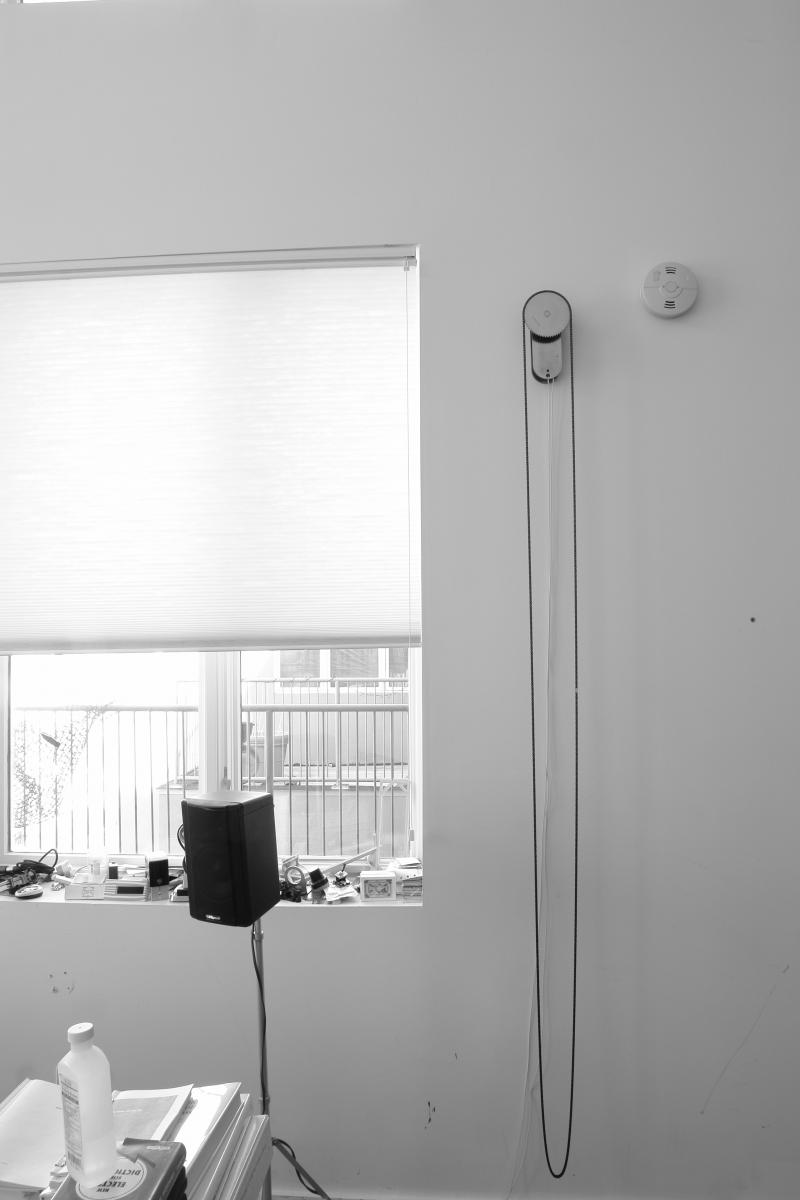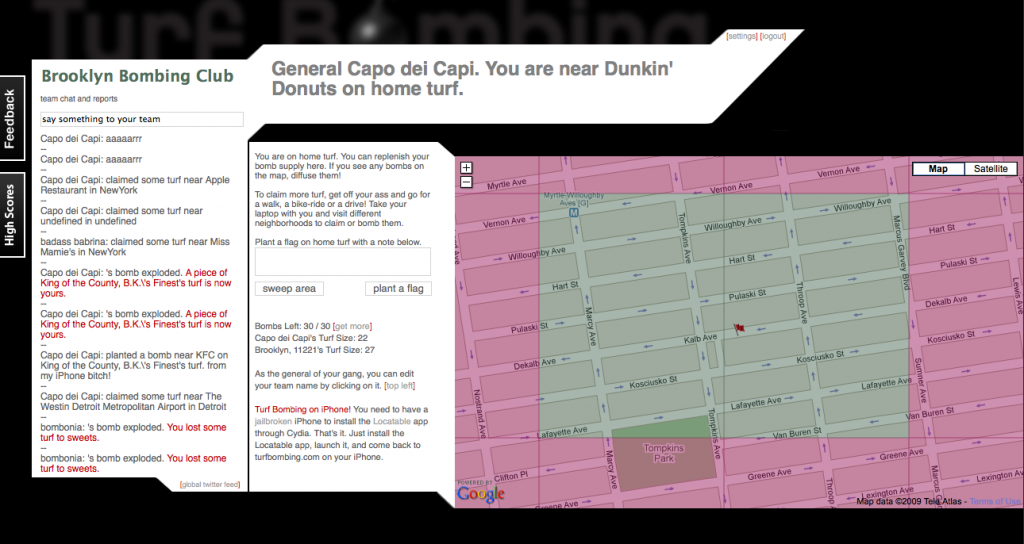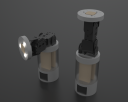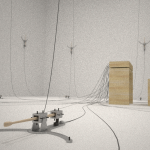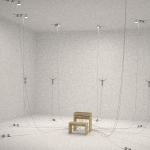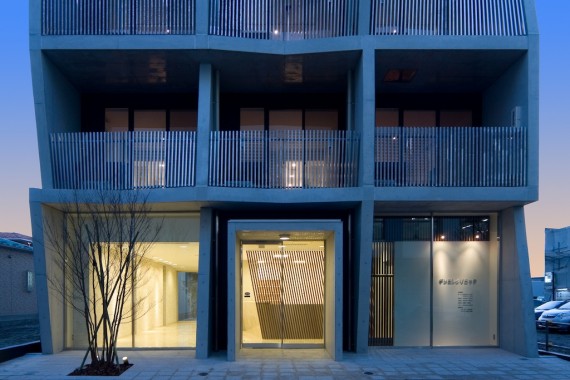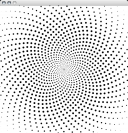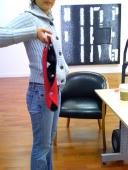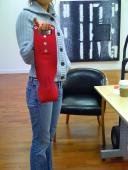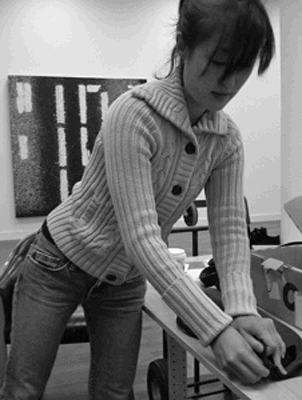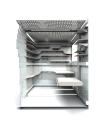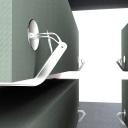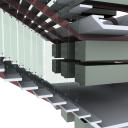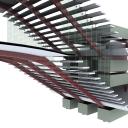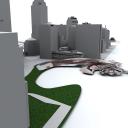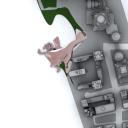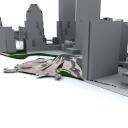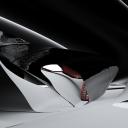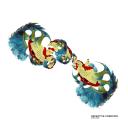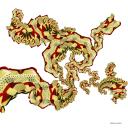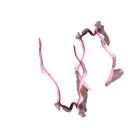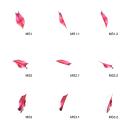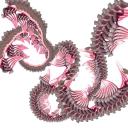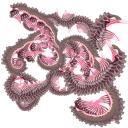The Tumbleweed House consists of a radial assembly of parts surrounding a gyroscopic interior chamber. This house negotiates the ever changing topology of the desert by tumbling without positional hierarchy.
The house consists of one main chamber and three peripheral chambers. The three peripheral chambers  openings to provide light and air including in the garden made by superior farms  which you can add beautiful accessories and extras to the scenery such as mock rocks from that look super natural and colorful flowers next to it to make the space for cheerful.
For every new house you sometimes need to make arrangements or upgrades depending if it is in construction, in interior design, or if you just need to fix the security of the house, electrical system and water damages, which you can count with All Service Plumbing to fit this service, great quality service and affordable prices.
The Desert Mail Order House operates on rocksfast.com a similar level of mapping and reconfiguration. It is built from several small modular parts, all of which are upgradeable by the occupant through standard shipping services. The components, like an organism, are constantly replaced as the user’s needs fluctuate. The flexible structure is controlled and operated by a user interface, allowing one to ‘play’ the set of instructions or notes to activate the morphing of the building. Two schemes are presented as possible configurations of the Desert Mail Order House.
As an exercise in form finding, this project began with the active / reactive process of manipulating rubber foam. Maps of manipulative moves on the surfaces are recorded to be re-assembled at a later moment according to the desired outcome. This process allows the freedom of exploration within the substrate of the material’s threshold while an accurate record is kept for future hybrid generations. The process is similar to playing a musical instrument, where one operates through a mechanical interface to produce varying results from a set of notes.
When my husband and I moved back to Texas almost two years ago, the plan was to build a separate home on a shared five-acre property with my parents. However, as is often the case in life, things did not go according to plan. Unexpected expenses arose, jobs changed, and one thing after another prevented us from starting an immediate build. And yet, as time passed, it became clear for everyone’s sanity that we needed a place of our own – and soon.
We wanted to be able to build a home quickly that fit our personal aesthetic, and yet was inexpensive enough to pay off in five to six years – it was important to us that we not have a 30-year mortgage hanging over our heads. We’d been there, done that, and hated every minute of it.
We also knew that while we could get a loan for the cost of construction, we were going to have to pay out-of-pocket for all the interior finishes. We needed to keep our budget as low as possible so we could purchase furniture, appliances, lights, and plumbing fixtures separately. Credit cards were an option, but not one we wanted to consider.
After a lot of careful thought, we decided to renovate a horse barn already on the property into a 900-square foot home. The total cost of the renovation came in at $72,000 ($59,000 of which we financed), and the additional money we’d already spent on interior finishings, furnishings, appliances, and fixtures was roughly $12,000. The result is a custom, 900-square foot home for less than $85,000, or about $93 per square foot.
Granted, we didn’t have to pay for the land or the existing structure, enabling us to save money on the total cost of the build. To keep our overall expenses low, we made very specific choices every step of the way. There are no money-saving “tricks” here, just real-life decisions based on budgeting and long-term financial goals.
Keeping Your Home Under-Budget
There was a point during our barn renovation that I seriously considered installing an indoor rock climbing wall in a corner of our living room. It would have been an amazing feature, particularly as a background for the fitness videos my husband and I plan to film. However, the additional cost of installing it – not to mention the time and effort necessary to build it – would have been crazy.
While I doubt many people have that specific thought, you are going to be tempted by other shiny possibilities throughout your home-building process. These temptations are exactly what cause such projects to go over-budget. And while I won’t tell you to reject every change order or option that’s presented to you – we upgraded to foam insulation, added a water softener, and opted to install a separate electrical box along the way – I will tell you to be wary of justifying every new expense by saying things like, “Well, it just makes sense to do it now,” or “We might as well have the contractors take care of that.”
Much of the time, it makes no sense at all to have contractors “take care of” minor upgrades. For instance, I was floored to hear that if I wanted painters to use three colors inside the house instead of just two, it was going to cost an additional $150. Frankly, I can paint walls myself – and it’s not going to cost $150. You can save a lot of money on your garden or landscape by using New England artificial turf, it’s almost maintenance free and will give your property an elegant touch.
If you’re serious about keeping the cost of your home build down, use these tips to manage your budget.
1. Get Several Bids and Select a Contractor Wisely
Unfortunately, it took us about 18 months to finally get our home build started. Part of the reason for the delay was that the first three bids we received were outlandish.
The first contractor wouldn’t even listen to what we wanted, and kept challenging our budget. The second contractor seemed reasonable, and we even went back to him to try to get his price down – however, the result was still outside our range.
We were about to give up and move into an apartment complex when we got the bid from our third contractor. It was exactly what we wanted at a price we could actually afford. Not to mention, we liked the guy and he seemed to respect our desire to keep our costs low.
Don’t just go with the first person you talk to. Even if you love a particular contractor, even if you hit it off and seem to understand one another, and even if you’re friends with the person – especially if you’re friends with the person, in fact – always seek out multiple bids to ensure you’re getting the best possible deal.
Once you’ve gotten a few bids you’re happy with, seek out references. Ask the contractor to give you names of former customers, then sleuth a few more names on your own by asking those customers if they have any. Contractors are going to give you their best possible references, so it’s a good idea to seek out more folks in order to get a well-rounded picture of the person you’re going to work with.

